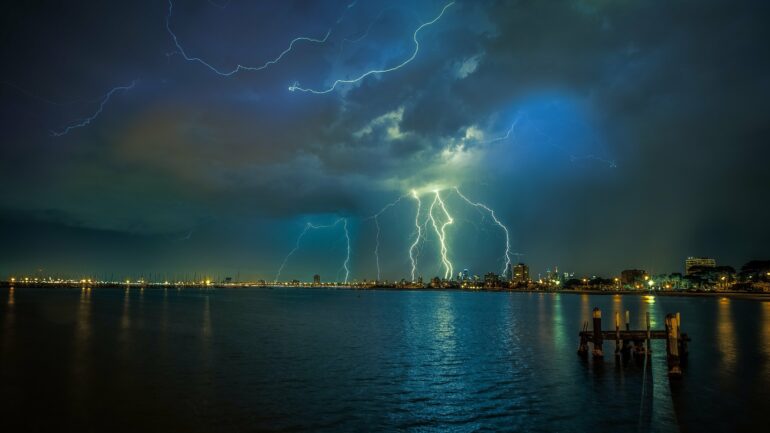Air pollution is increasing the severity of summertime thunderstorms, according to a recent study conducted by researchers at James Madison University and published in the journal Atmospheric Research.
JMU geography professor Mace Bentley, the lead author of the study, says, “Pollution acts as cloud nuclei. It gets brought into the cloud through the updraft; the updraft and downdraft then separate the pollution particles, which divides the electrical charges in the cloud and leads to more lightning production.”
The three-year study examined nearly 200,000 thunderstorms in the Washington, D.C., area and more than 300,000 in the Kansas City area.
Using 12 years of lightning data from the National Lightning Detection Network and data from hundreds of air pollution stations in the two cities, the researchers were able to determine that in environments with high instability, adding more pollution increases cloud-to-ground lightning strikes, Bentley said.
Bentley is doing similar research on Bangkok, a megacity with more pollution than Washington, D.C., and Kansas City and located in a hot, tropical climate. His results so far are similar, albeit with lightning rates even higher in those storms.
“It looks like no matter where you go in the world, urban pollution is capable of enhancing thunderstorms and lightning,” he said.
More information:
Mace Bentley et al, Toward untangling thunderstorm-aerosol relationships: An observational study of regions centered on Washington, DC and Kansas City, MO, Atmospheric Research (2024). DOI: 10.1016/j.atmosres.2024.107402
Provided by
James Madison University
Citation:
Three-year study suggests air pollution increases thunderstorm danger (2024, August 20)



